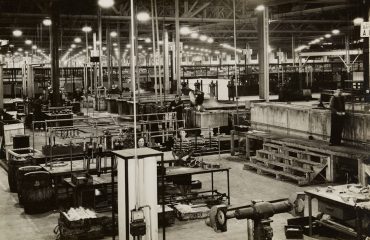The steel industry, a cornerstone of global infrastructure and manufacturing, faces a critical challenge: decarbonization. With steel production accounting for a significant portion of global greenhouse gas emissions, achieving net-zero targets is paramount for a sustainable future. This post delves into the complexities of this ambitious goal, exploring the hurdles, innovative solutions, and the path towards a greener steel industry.
The Carbon Footprint of Steel: Understanding the Challenge
The primary source of emissions in steelmaking stems from the ironmaking process, specifically the use of coke (derived from coal) in blast furnaces. Coke provides the heat and reducing agent necessary to extract iron from iron ore. This process releases vast quantities of carbon dioxide (CO2) into the atmosphere. Beyond CO2, other greenhouse gases and pollutants are also emitted throughout the entire steel production lifecycle, from mining raw materials to transporting the finished product. The sheer scale of global steel production makes even small improvements in efficiency crucial for substantial emissions reductions. Quantifying this footprint accurately is the first step towards effective decarbonization strategies. Life cycle assessments (LCAs) are becoming increasingly important in identifying emission hotspots across the entire supply chain, from raw material extraction to end-of-life recycling.
Innovative Technologies for Decarbonizing Steelmaking: A Technological Revolution
The pursuit of net-zero steel hinges on technological innovation. Several promising technologies are emerging to replace traditional blast furnaces and drastically reduce emissions. One of the most significant is **hydrogen-based direct reduction**, which uses hydrogen instead of coke to reduce iron ore. Hydrogen, when produced from renewable sources like wind or solar power, offers a pathway to completely decarbonize the ironmaking process. Furthermore, **electric arc furnaces (EAFs)**, which use electricity to melt scrap steel, are gaining prominence. EAFs have a significantly lower carbon footprint than blast furnaces, particularly when powered by renewable energy sources. Other emerging technologies include **carbon capture, utilization, and storage (CCUS)**, which captures CO2 emissions from steel plants and either stores them underground or utilizes them in other industrial processes. Finally, advancements in **process optimization** and **energy efficiency** are contributing to further emissions reductions in existing steelmaking processes.
Policy and Regulatory Frameworks: Driving the Transition
Government policies and regulations play a vital role in accelerating the transition to net-zero steel. Carbon pricing mechanisms, such as carbon taxes or emissions trading schemes, incentivize steel producers to reduce their emissions. Stringent emission standards and regulations can also compel the industry to adopt cleaner technologies. Furthermore, government support for research and development of low-carbon steelmaking technologies is essential to fostering innovation. Subsidies, tax breaks, and grants can accelerate the deployment of new technologies and make them economically viable. International collaborations are also crucial to ensure a consistent and effective approach to decarbonizing the global steel industry, avoiding a competitive disadvantage for companies committed to sustainability.
The Role of Supply Chains and Circular Economy: Collaborative Efforts
Achieving net-zero emissions requires a holistic approach that extends beyond individual steel plants. Sustainable supply chains, focusing on responsibly sourced raw materials and minimizing emissions throughout the entire production process, are crucial. The circular economy plays a critical role, emphasizing the reuse and recycling of steel scrap. Increasing the use of scrap steel in EAFs significantly reduces the need for virgin iron ore and coke, thereby lowering emissions. Collaboration across the entire steel value chain – from mining companies to steel producers, manufacturers, and consumers – is essential to establish robust and sustainable practices. Traceability and transparency throughout the supply chain are vital to ensuring the environmental integrity of steel products.
Challenges and Opportunities: Navigating the Path to Net-Zero
The transition to net-zero steel is not without its challenges. The high capital costs associated with new technologies, the need for large-scale infrastructure upgrades, and the availability of renewable energy sources are significant hurdles. Furthermore, ensuring the competitiveness of low-carbon steel in the global market requires careful consideration. However, the transition also presents significant opportunities. The development and deployment of new technologies create economic growth and job creation. A greener steel industry enhances the sustainability of various sectors, from construction and automotive to energy and infrastructure. Moreover, the demand for low-carbon steel is expected to grow significantly in the coming years, creating a substantial market for sustainable steel products.
In conclusion, achieving net-zero targets in steel production is a monumental task but a necessary step towards a sustainable future. Through technological innovation, supportive policies, collaborative efforts across the supply chain, and a commitment to circular economy principles, the steel industry can forge a greener path, ensuring its long-term viability and contributing to a more sustainable world.




